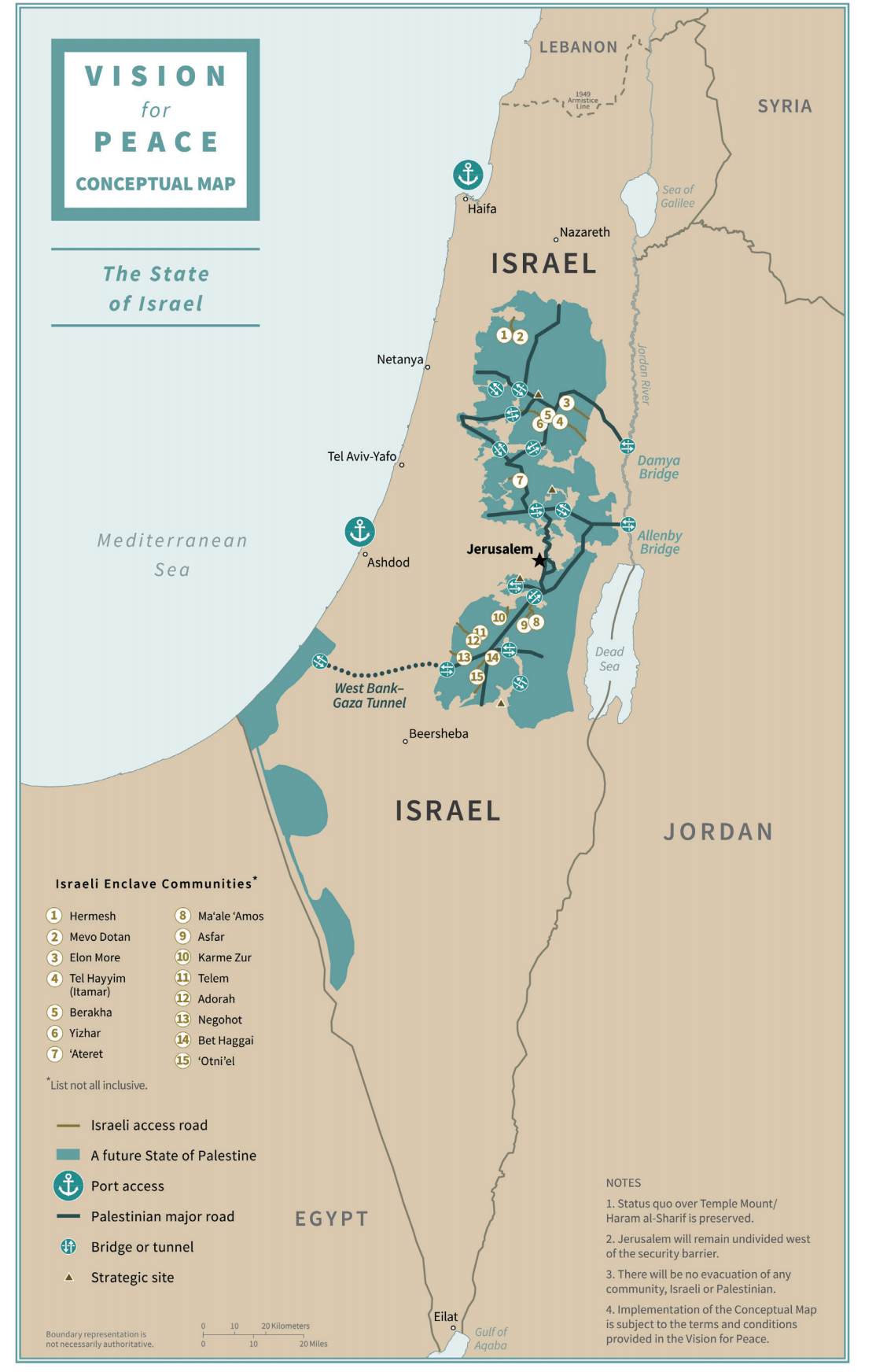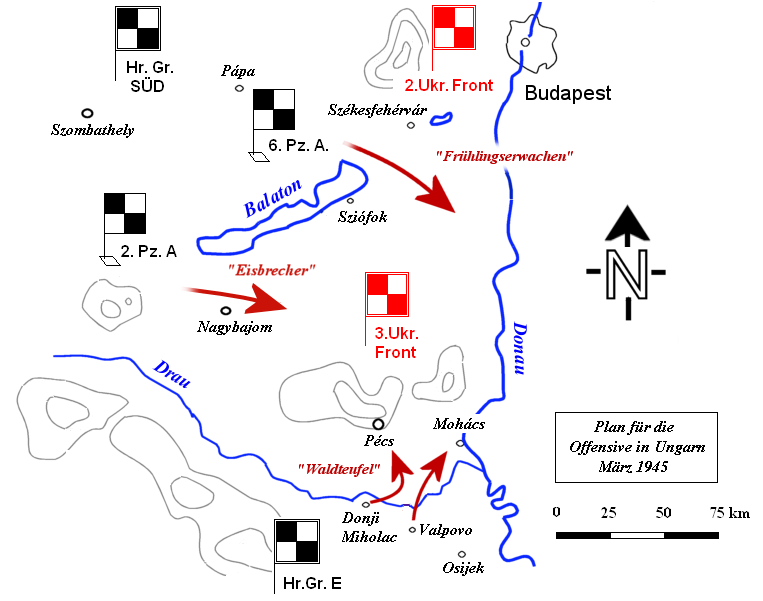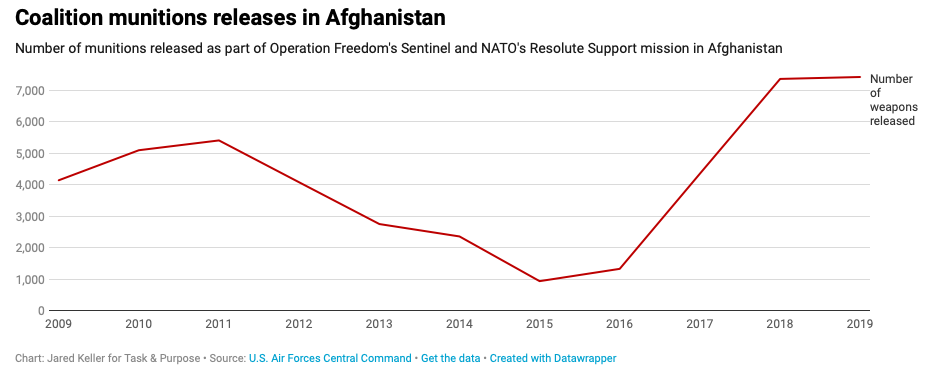One day, long, long ago, a man was fishing on the reef, and he saw something out to sea. It appeared to be an island, but it moved. He ran to the beach shouting ‘’An island is coming here’’, and quickly the people gathered on the beach to watch a sailing ship approach and anchor off the reef. The inhabitants of this island came ashore, and our island-world ceased to be. The world exploded, and our island became a remote outpost …the last place in a country which has few centres and much remoteness – (Luana, 1969 : 15)
In the mid-1960s I spent 14 months in the Central Highlands of New Guinea studying the agricultural system of the Enga people, this in the context of my doctoral research in the Research School of Pacific Studies, as it was then called. For much of this time I lived among the Raiapu Enga, on the southern slopes of the Lai Valley, overlooking the patrol post, mission station and airstrip at Wapenamanda. The Aruni – their clan name – at Sabakamádá built a house for me on the edge of their ceremonial ground, welcomed me into their homes and gardens, and responded with surprising patience, and occasionally with real interest, to my interminable questioning. Their willingness to share their lives with me, their generosity and above all their pride and dignity left an indelible mark on me. Even today, over 50 years on, scarcely a week goes by without my thinking about the time I spent in what we call today Enga Province. In this respect I share without a shadow of a doubt the sentiments of Joël Bonnemaison, a fellow ethno-geographer and above all friend, who I first met in Canberra back in 1968 :
Local studies commenced in the 1960s and continue to be practised, differently. For those researchers who undertook them it is an extended immersion (…) in another society, a first confrontation between ideas and the reality of ‘fieldwork,’ and often a kind of initiation. We all return from it changed, respectful of those whom we have met. (Bonnemaison, 1993. My translation and emphasis.)
The Golden Age
With the benefit of hindsight I now realise that I had experienced what another of my contemporaries, Bill Clarke, called theGolden Age in Papua New Guinea, that brief but magical period for both the observers and the observedthat was suspended between the end of tribal fighting and the onset of global capitalism. It was a time of discovery of other ways of inhabiting the earth. It was also a time without fear which nourished expectations of a more generous and caring world to come. The Highlanders welcomed us inquisitive strangers into their land. Our mutual concern was to get to know each other and, quite naturally, to collectively benefit from the ties we were in the process of establishing. In my particular case I was deeply impressed by the sophistication of the Enga agricultural system, in other words it’s absolute intelligence, this in a context of climatic marginality and demographic pressure. By the extraordinary order and beauty of the humanised landscape too. Indeed Joël created a vocabulary to describe a similar world in Tanna (Vanuatu) : magical gardens, enchanted territories, cultural plenitude…
In the 1960s the land belonged unequivocally to those who inhabited it. The colonial State ensured relative peace and freedom of movement, its primary concern being to establish a pax australiana,while the Corporation, with its insatiable thirst for resources to nourish the global economy, was yet to rear its head. Living temporarily on the edge of the sing-singground at Sabakamádá I was able to appreciate something of the quality of Raiapu Enga life; the easy mix of work and leisure and, with regard to the latter, the wealth of casual conversations, of social relations and of ceremonial activities. I felt inspired, both intellectually and emotionally. Certainly it wasn’t ‘paradise’ – but then does such a place exist?! There were inequalities in material wealth and hence in the exercise of power. So there was a big man and one or two rubbish men among the Aruni, but there was no abject poverty, no exclusion. Rather the big man took the rubbish maninto his household such that, in return for his labour, he was cared for. The big man, for his part, was called upon to defend the interests of the clan (community) as a whole. Further, with the exception of high infant mortality and some protein deficiency in the diet, the general health status and life expectancy of the population as a whole was surprisingly good.
There were inevitably moments of questioning on my part. I think particularly of the time when the young bachelors, following their return from the clan’s sadárú (initiation) ceremony in the hills, ran amok for 24 hours or so. It was a ritualised moment of individual frustration, largely symbolic violence and anger prior to settling into adult life as a formally delineated, and hence constrained, member of the group. The deceased Kanak leader Jean-Marie Tjibaou about whom I wrote several decades later (Waddell, 2008), offers a vivid description of the New Caledonian equivalent of this adult world the young Enga men were on the point of entering:
Landscape, village layout, society, the deceased and mythical beings constitue a whole that is not only indivisible but still practicially undifferentiated…. The space of the tribe appears in this way like the immense stage of a perpetual theatre where each person plays his role at an assigned place.(Tjibaou, 1976 : 284-285. My translation and emphasis.)
There was indeed little place for individual expression or non-conformity among the Enga such as were a feature of my own world, and I certainly reflected on this profound difference that characterised our respective lives. Yet it was never a source of concern or judgement on my part.
If my experience and my memories are of a place and a people of great beauty, I have nevertheless carried with me for over 50 years now the questioning of an old man who would often visit me in my house and who otherwise spent much of his time chatting with kin on the ceremonial ground just behind. His name was Komeyá and I cherish a photo of him. It is there, above my desk, and it nourishes my thoughts about the interconnected world in which we all now live, this even though my home on the shores of the Saint Lawrence River (Canada) is some 15 000 kilometres away from the Lai Valley. He was a lapun man who had known tribal warfare and the time before the irruption of Australian colonial administrators and foreign missionaries in his land. He was troubled by the totally unsolicited arrival of strangers in his land, strangers who showed no signs of leaving and who clearly sought to impose their will on his people. It was this concern which led him to ask me, time and again, the same question : « Why have you kone [red people] come here? What precisely do you want? » I was young and I could offer no satisfactory (to either of us) answer to his querying. I no doubt talked about learning and sharing, about ‘the family of man’, about a desire on the part of the world from which I came to ‘help’. And I probably expressed the wish to build a better future for us all. But it was all pretty vague and incoherent. Certainly I had a good idea why I personally was there but I don’t think I had much of a clue in a broader, civilisational sense. Also, I was fully conscious of the fact that I was only passing through his land.
Image 1: Komeyá, the lapun man from Sabakamádá

One extraneous event is inscribed in my memory of the late 1960s in Melanesia. It was the news of what I believe was a UNDP fact-finding mission to the Solomon Islands2, the objective of which was to identify needs and development priorities for the soon-to-be-independent colony. The UN body had been established in 1966 with the aim of engaging in a global ‘war on poverty.’ In the case of the SI mission, the team rapidly came to the conclusion that the quality of life there was satisfactory and that, apart from investing in improved health services, the country should basically be left alone! Needless to say their report was rapidly condemned to oblivion since their recommendations did not fit with interests and vision of the emerging new world order.
I only returned to Enga country briefly since my doctoral field research. It was in 1972-1973 and it involved two visits with a single purpose, to look at the impact of the 1972 frosts on the population and, more specifically, to identify their strategies for coping with such an extreme event. The nature of the crisis meant that I spent most of my time on the edge of the Marient Basin (near Kandep), where people were living at an altitude of around 2,400-2,500m and crop loss due to the succession of frosts was substantial. The Aruni, living at a significantly lower altitude – c.1,700-1,800m – and on the lower slopes of a relatively incised river valley, had for their part experienced no significant ground frosts and attendant damage to their crops. I nevertheless profited from the occasion to visit Sabakamádá. What a welcome I received! I recall walking in through the mounded sweet potato gardens, the joy of seeing old friends and neighbours, our spontaneously embracing each other, and asking for news, talking of births, deaths and other personal events that were of primary concern to us all as fellow human beings whose lives had been interwoven for a time and had been nourished by memory since my departure back in 1967. It was a moving experience and I thought once again about the family of man and of the bonds that unite us all.
Then I left, never to return to Sabakamádá.
Change
By virtue of my new research mandate I travelled reasonably widely among the high-altitude Enga and I became conscious of the groundswell of change that would inevitably transform the Highlands in the years to come: the development of the cash economy with, notably, an increasing number of trade stores stocked with alcohol; the sense that old tribal grievances were re-surfacing; the emergence of ‘pay week’ and ‘rubbish week’ in adminstrative centres, with the attendant domestic violence; Toyota Landcruisers and pick-ups abandoned by the roadside. I sensed being witness to the slow emergence of a new kind of disorder and new forms of instability characterised by a situation where there would be few ‘winners’ and many ‘losers’, where the Enga as a whole would lose control of their destiny, and where, in other words, a new kind of chaos was emerging. The Golden Age appeared to be coming to an end and I too was experiencing a growing sentiment of loss. I was uneasy.
Largely unconsciously I think, PNG slipped slowly over the horizon as I moved on in life. I was partly drawn by my newly developed roots and dreams in French-speaking North America. However another part of me remained firmly grounded in the Pacific, a Pacific that had nourished me as a young man and had helped mould my values and world-view : the celebration of difference, learning from other peoples, recognising the crucial presence of the past in our lives – Epeli Hau’ofa would later describe this state of mind as ‘Pasts to remember’ – and the vital role of culture, hence of collective identity and the collective good as being the essential foundations for political action. I had, largely by a process of osmosis no doubt, learned a great deal about life in the course of my PhD research in the New Guinea Highlands and I was determined to re-enter Oceania in a different capacity.
In the 1980s and 1990s I spent extended periods teaching at the University of Hawai’i (Manoa), the University of the South Pacific (Fiji) and the Université de Nouvelle-Calédonie. This meant I now had Oceanians as colleagues and students, notably at USP. Both offered me a different perspective on the world of Pacific Studies and indeed the business of scholarly research in general. Islands and island peoples were no longer the object of my interest, to be viewed through the prism of scholarly debate and preoccupations in metropolitan countries. Rather they were fellow teachers, friends and students who invited me to read the world from their perspective and according to their firmly grounded and pressing preoccupations. I started listening to voices that were consciously positioning themselves outside the scholarly – particularly disciplinary – mainstream. In the case of USP I think particularly of Epeli Hau’ofa, a PNG-born Tongan who had studied and engaged in field research in anthropology, Epeli quickly realised that he had been formatted to deliver a clinical, disembodied and ultimately desperate view of his own people, be they in PNG, Tonga, Fiji or elsewhere in the Pacific Islands:
[A]fter decades of anthropological field research in Melanesia we have come up only with picture of people who fight, compete, trade, pay bride-prices, engage in rituals, invent cargo cults, copulate and sorcerise each other. There is hardly anything in our literature to indicate whether these people have any such sentiments as love, kindness, consideration, altruism and so on. We cannot tell from our ethnographic writings whether they have a sense of humour. We know little about their systems of morality, specifically about their ideas of the good and the bad, and their philosophies… (Hau’ofa, 1975 : 61)
They [anthropologists] do not know how we feel (ibid : 58)
Furthermore, in teaching anthropology at USP in the 1980s and early 1990s, he quickly came to appreciate that this perspective, dictated by foreign knowledge and transmitted according to the dictates of foreign scholarship, only served to belittle his students and render them powerless :
I began noticing the reactions of my students when I described and explained our situation of dependence. Their faces crumbled visibly, they asked for solutions. I could offer none. […] I was actively participating in our own belittlement, in propogating a view of hopelessness. I decided to do something about it. (Hau’ofa, 1993 : 5)
That ‘something’ was to abandon the cold, disciplinary confined intellectualism of the international academic community in favour of an approach to knowledge and understanding as embodied by the Pacific Island peoples of which ‘I [Epeli] am emotionally a part.’ By the mid-1990s he had come to the conclusion that approach would be centred on arts and culture, ‘a distinctly Oceanian way of transmitting knowledge’,3a way that was firmly grounded in the past. Such an approach would ensure that the architects of this creative world set their own rules rather than be subject to dictates imposed from outside.
Insofar as the political arena was concerned, it was the Kanak (New Caledonia) independance leader Jean-Marie Tjibaou who attracted my attention. It too was in the early 1990s, that is at the same time that I re-established close contact with Epeli. Jean-Marie, like Epeli, had spent the first decade of his life in the village, close to the land, immersed in the closely-woven fabric of social life and experiencing a Melanesian universe that was defined at least in part by the constant presence of the past. Like Epeli he also studied anthropology, in his case in France, although he didn’t complete his PhD. The path he chose in early adult life was the Church rather than the University, and as a priest in Nouméa he experienced the same shock as Epeli did as a professor in Suva:
During the year I was curate in Nouméa… what a lot of drunks I gathered up in the evening… to take home… And I often experienced that discourse, cries from the bottom of the dungeon… the tears that recall the lost land… and who proclaim… who get angry, who fight, who struggle… but who find comfort in alcohol. (Tjibaou, 1989 : 19)
Like Epeli, he chose to pursue studies overseas, first in the broad field of development studies and then in anthropology, with the intention of ‘looking for the analytical tools that would help better understand the situation here [in New Caledonia] (ibid : 17)’. The time he spent in France and his experience in social action once back home led him, as with Epeli, to become a severe critic of Western development models, centred on industrialisation, accumulation, uniformisation, individual gain, and on erasing the past. Hence his conviction, even as a politician in the 1980s, that it was necessary to return to one’s roots, one’s cultural identity in order to lay the foundations today of an authentically Melanesian destiny :
[T]he search for identity, the model, lies before us, never behind. It is being constantly reformulated. And I will say that the challenge right now is to include the maximum number of elements belonging to our past, to our culture, in the model of mankind and society that we aspire to for the creation of the city. (Tjibaou, 1985 : 1601)
Not surprisingly perhaps, Jean-Marie would typically commence gatherings of the Kanak independence movement by thanking the ancestors for being present. It was yet another illustration of the fact that he, like Epeli, was deeply concerned with the future of the Pacific past. Both recognised the promotion of a dynamic and firmly grounded Oceanian culture and identity to be the only possible way forward.
It was about this time – the early to mid-1990s -, by virtue of the changes I had been witness to here in Canada and because of my increasing familiarisation with the writings and actions of the likes of Epeli and Jean-Marie back in Melanesia that I was finally able to formulate in my own mind the answer to the Enga lapunman’s question; ‘’Why have we Konecome to the land of the Enga? What precisely do we want?’’ That answer was simple, direct and troubling;
We want your primary resources – forest products, copper ore, gold, nickel, oil, natural gas, fish… – to help meet the demand of the rapidly expanding global economy. We want your labour, to produce coffee and palm oil in response to global consumer demand. And we demand your integration as consumers into that same economy. In other words, we are seeking new markets too. We want everything of value to us, at minimum cost and with maximum benefits to the investors.
All this means of course on terms where the vast majority of Enga/PNGns/Melanesians are condemned to the role of simple onlookers in an arena where our avowed aim is to transform their lives. I was mortified at the thought, and I still am today. Why wasn’t I aware of this back in 1966? What had happened? Was I in fact some kind of passive and unconscious agent in the process of mass and totally uncompromising externally directed change? The question is not an easy one and, in seeking to answer it, I can only really speak for myself, although I believe the likes of Joël Bonnemaison, Bill Clarke and Epeli Hau’ofa shared most of my sentiments. Unfortunately they are no longer with us to tell their version of the story.
The rise of corporate power
This is neither the time or place to provide a summary of post-war economic history. It is nevertheless vital to highlight the fact that a major change in direction in terms of North-South relations occurred around the 1980s. In the aftermath of the Second World War our principal preoccupation in what came to be termed the ‘developed world’ was one of human justice, poverty elimination, the end to war, rebuilding entire countries and continents, all this in the spirit of sharing in as generous a manner as possible. These were the values I certainly learned and then practised as an adolescent. I volunteered with the Service Civil International (SCI), going to work camps in France and Switzerland. We were Catholics and communists, pacificists, vegetarians, hippies before their time, school teachers… I recall a Swedish Jew and a German war-time Messerschmitt pilot in one of our camps. I worked a while for the abbé Pierre in Paris. We were all striving to build a better world for all. We endeavoured to speak each others language, we sang each others songs and we called each other camarade. We were fascinated by the diversity of the human experience and we believed ourselves to be citizens of the world, hence enthusiastic members of the family of man.
This is not the first time I use the expression. It refers specifically to an exhibition of 503 photographs of people from around the world that was first presented at the Museum of Modern Art in New York in 1955. Over the following decade it travelled around the world and was seen by over nine million visitors. It offered a fascinating portrait of mankind, highlighting both the diversity of the human experience and the sense of being part of a single community of global dimensions. My generation was deeply marked by this humanist vision of the world and it was, implicitly at least, this which in the early 1960s took me to PNG and on to the Enga, in search of my fellow men. I think it fair to say that the exhibition mirrored a post-War era where governments, and the international alliances and agencies they created, were concerned with human justice and dignity – to include self-government -the reduction of poverty, and the improvement of the health and nutritional status of entire populations. Wealth generation and profit were not yet primary preoccupations. There were obviously profound ideological divisions with regard to the way to proceed; the communist and capitalist blocs, the non-aligned movement. However, ideology apart, they could all be considered societal projects. This was the case with PNG in the mid/late 1960s. Australia was preparing the country for political independence. I felt it to be a reasonably generous and caring time and I had no sense of myself, the colonial administration or the Christian missions being agents of subversion of Melanesian society. Certainly we didn’t really doubt that they would quite spontaneously want to share some of the ‘benefits’ of Western civilisation. We perceived our actions to be an appropriate path to ‘improving’ the daily lives of the Enga but not one of radically transforming or destabilising them.
What we now term economic development, measured in terms of such quantitative parameters as growth, profitability, competitivity, gross domestic product, etc., has it roots in the USA and no doubt started to take form as a global initiative in the immediate aftermath of the Second World War. Its first major manifestation was the Marshall Plan for European reconstruction. While the plan set the foundations for the creation of multinational corporations, it was the state that was the major actor in development, both national and international, and interests were directed primarily to social and economic justice and the building of solid national institutions. As first an adolescent and then a young man, I was witness to and, as a SCI volunteer, a tiny actor in an initiative of global dimensions that I and those around me believed to be a noble and generous endeavour. It was those concerns and those interests which drew me to PNG in the 1960s.
It was in the following decades, notably in the 1980s, that a shift occurred, with the progressive transfer of economic initiative from the state to the private sector. This shift was accompanied by a fundamental change in intentions. The corporate world expressed little interest in social welfare, or any form of integrated regional development. Its over-riding concern was with profit, ideally short-term, to be acquired through unlimited economic growth across a world increasingly free of barriers to the movement of goods, services and capital. Where states proposed a shared vision of the future and were accountable to their citizens, corporations have much narrower interests and are only accountable to their shareholders. The state is now largely at the service of these enterprises. Society has little meaning in the eyes of the corporation. Indeed wasn’t it Margaret Thatcher, that architect – along with Ronald Reagan – of the brave new world, who asserted ‘There’s no such thing as society!’? It was more of a premonition or, perhaps, a programmatic statement than a fact at the time. Certainly today however, with the withering of the state and the unleashing of the corporation and financial oligarchies, society has been transformed into a largely unstructured mass of consumers, an infinite number of individuals, throughout the world, Enga Province included.
I had no idea back in the 1960s that this would be the shape of the world to come. However I do now know that Komeyá, the old Enga man at Sabakamádá, had every reason to ask me a question for which I had no satisfactory answer at the time. I also know that I do not believe in economic development and unlimited growth as practised today. It is a cruel and indeed absurd agenda in terms of the rapidly growing inequalities within communities and between peoples, and the accumulation of largely useless commodities it generates. And it is an absolute disaster for the biosphere. Confronted as we are with the pollution of soils, water and air, the decline in biodiversity, starvation and the massive dislocation of human populations, time is fast running out for us all. Another mass extinction may well occur, and this time it could conceivably be homo sapiens.
I think it is fair to say that all those who I have named in the preceding pages – Joël Bonnemaison, Bill Clarke, Epeli Hau’ofa and Jean-Marie Tjibaou – ceased to believe in development strategies as formulated in the metropolitan countries. Perhaps they ceased to believe in economic development at all. Certainly there came a time in their lives when they no longer espoused the litany of industrialisation, accumulation, growth and individualism. Jean-Marie Tjibaou dreamed that one day, in the not too distant future, the Kanak people would be invited to sit at the ‘banquet of civilisations’ in order to contribute to a shared discussion on the future of the world. Epeli Hau’ofa strove for cultural and intellectual independence for his Oceanian brothers and sisters, this through the independent development of arts and culture firmly grounded in their own past. This alone would allow them to design their own future. As for us visiting researchers from the West who, in the 1960s and 1970s, had the good fortune to be immersed in rural Melanesian society but who only came to appreciate the significance of the experience several decades later, allow me to share some of Joël’s thoughts, summarised in a paper I wrote in his memory :
On the island of Tanna he was witness to the encounter of two truths, one with and the other without real roots. More important, he observed through their confrontation, ‘a conflict of ideas that was of global significance’ (Bonnemaison, 1997 : 521) and he came to the unavoidable conclusion that it is more important to live culturally than it is to survive materially. Otherwise our very existence is without meaning. Finally, in order to realise this dream, which had unexpectedly become universal, he had the sentiment that it was necessary to ‘refer at one and the same time to the past and to the challenges of the present,’ both to ensure that all peoples can live decently and honour their ancestors, and to ‘recreate the unity of the world’ (idem: 514) (Waddell, 1999 : 182).
And for this new world to materialise he recognised that the West had to cease being the giver of lessons.
Looking back to the 1960s all this was perhaps unconsciously revealed to us at the time but there certainly wasn’t the sentiment of urgency to pass the message on to the world from which we came. So we only returned home transformed individually by the experience because, in reality, we had only left to observe, rarely to listen and discuss. What a conversation I might have had with my lapun man if he had been able to share his preoccupations with me for, in the final analysis, he was not perhaps asking me a question. Rather he was inviting me to engage in a conversation, a conversation between equals.
*
Note to readers: please click the share buttons above or below. Forward this article to your email lists. Crosspost on your blog site, internet forums. etc.
Prof. Eric Waddell is a renowned author and ethno-geographer concerned with issues of culture and identity within the New World Order. He is Honorary Professor at the School of Geosciences, Sydney University, Australia. He is a Research Associate of the Centre for Research on Globalization (CRG).
This article was first published in the 80th issue of The Development Bulletin, Australia National University (ANU) Since 1988 it has been the journal of the Development Studies Network, currently based at the Crawford School of Public Policy at the Australian National University.
This special publication celebrates the journal’s 80th issue. Its focus is the Pacific Islands and their specific trajectory from colonial states through independence to the present day. The editor commissioned these papers from Pacific Island, Australian, New Zealand and British academics, journalists, NGOs, government personnel and consultants who have lived and/or worked extensively in the Pacific over a number of years. The papers here are their reflections and perceptions of development, aid and change and their thoughts for the future.
The Development Bulletin is available online for free download and can be freely copied and used on condition that the source is acknowledged. In addition to the Development Bulletin, our website also has a collection of 87 papers on women and gender issues in the Pacific. Many are written by Pacific Island women.
https://Crawford.anu.edu.au/rmap/devnet/dev-bulletin.php
Sources
Bonnemaison, Jöel 1993, ‘Gens de pirogue,’ Chroniques du Sud, 11 : 93-94.
Bonnemaison, Joël 1997, Les fondements géographiques d’une identité. L’archipel du Vanuatu. Essai de géographie culturelle. Book 2 : Les gens des lieux : Histoire et géosymboles d’une société enracinée : Tanna, Orstom, Paris.
Hau’ofa, Epeli1975,‘Anthropology and Pacific Islanders,’ Man in India, 55 (1) : 57-66.
Hau’ofa, Epeli1993,‘Our Sea of Islands,’ pp. 2-16 in Eric Waddell, Vijay Naidu & Epeli Hau’ofa (eds), A New Oceania. Rediscovering Our Sea of Islands, School of Social and Economic Development, University of the South Pacific, Suva, Fiji.
Hereniko, Vilsoni and Karen Stevenson (eds) 2012, Hidden Treasures, Contemporary Pacific Art from the Oceania Centre Collection, USP Press, Suva, Fiji.
Luana, Caspar 1969, ‘Buka! A retrospect’, New Guinea and Australia, the Pacific and South-East Asia, 1, 4, 15-20.
Tjibaou, Jean-Marie 1976, ‘Recherche d’identité mélanésienne et société traditionnelle’, Journal de la Société des Océanistes, 53, 32): 281-292.
Tjibaou, Jean-Marie 1985, ‘Entretien avec Jean-Marie Tjibaou,’ Les Temps Modernes, 464 : 1587-1601.
Tjibaou, Jean-Marie 1989, ‘Le message de Jean-Marie Tjibaou.’ Interview by Jacques Violette, Bwenando, 121-124.
Tjibaou, Jean-Marie 1985 ‘Entretien avec Jean-Marie Tjibaou,’ Les Temps Modernes, 464 : 1587-1601
Waddell, Eric1999, ‘Rootedness and travels : The Intellectual Journey of Joël Bonnemaison’, The Contemporary Pacific, 11 (1) : 176-185.
Waddell, Eric 2008, Jean-Marie Tjibaou, Kanak Witness to the World. An Intellectual Biography. Pacific Islands Monograph Series 23, University of Hawai’i Press, Honolulu.
Notes
1 Honorary Professor, School of Geosciences, University of Sydney.
2 Not having kept any record of the event in my files, I am not 100% sure it was a UNDP mission so I shall attribute the lack of recall to a time when, to borrow a poetic image of Epeli Hau’ofa, ‘the moon and red wine play tricks on my aging mind’!
3 Cited in Hereniko and Stevenson 2012 : 10.

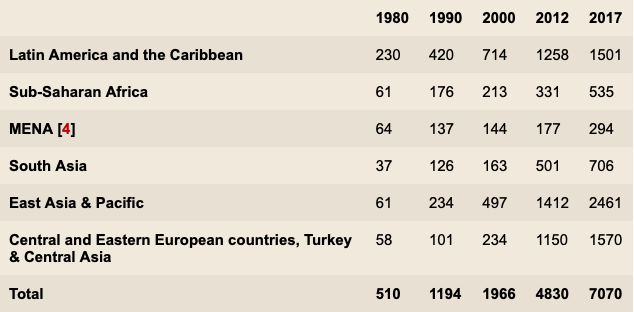
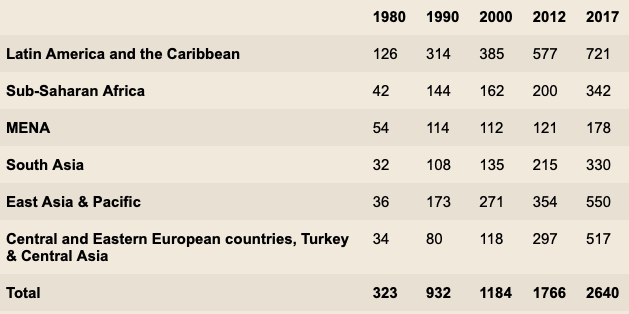
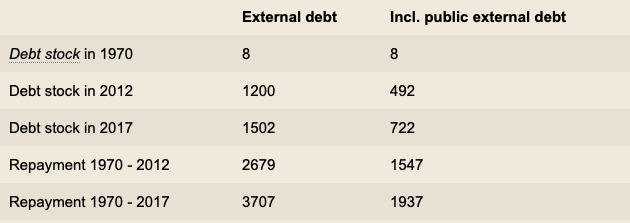

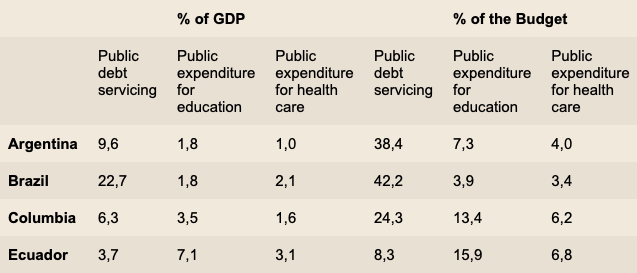


 Can you
Can you 